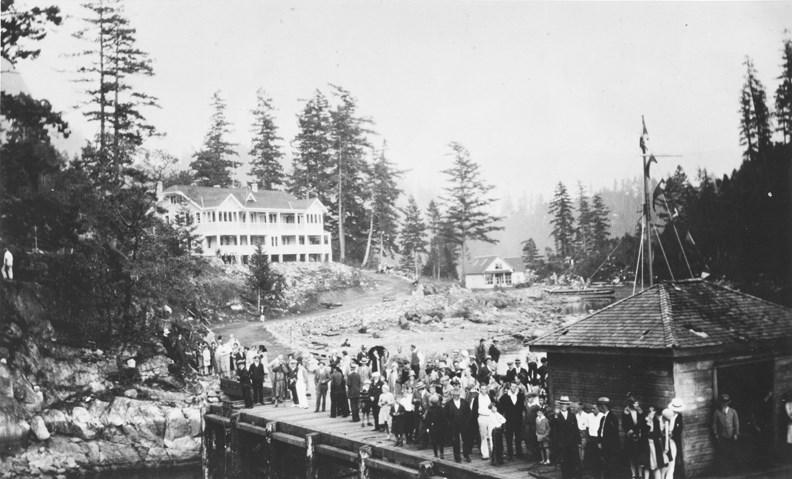We report this week that Dr. Geoff McKee is taking over the critical role of medical health officer for the Sunshine Coast, replacing the long-serving Dr. Paul Martiquet. To mark this historic transition, and as a hopefully useful gesture to Dr. McKee, we provide a quick history of medical care on the Sunshine Coast. It comes courtesy of retired doctor Eric Paetkau, who is a walking, talking encyclopedia on the subject.
As with everything on the Sechelt Peninsula, the history of health care begins with the shíshálh. Up until 1875, Dr. Paetkau relates in a fascinating brief, “the shamans did it all and the majority were women.”
The doctor interviewed one of the last remaining old-time shamans in the early 1960s. He learned from her that colds were treated by wrapping a patient in a blanket and steaming them, cuts were treated with pine tar pitch, and skin infections were treated with skunk cabbage. For strokes, “they would bring the patient from Deserted Bay to Porpoise Bay and immerse them in a tub of mud.” Porpoise Bay mud was reputed to have special healing properties; the French Army imported it during the First World War to treat their wounded soldiers.
The first medical health officer, a Dr. Forbes, came to the area in 1888. His territory stretched from Britannia Beach to Egmont. Indigenous people transported him up the inlet – and again, it was mostly done by the women.
These were apocalyptic years for the Native communities, as outbreaks decimated their populations – smallpox in 1862 and 1893, measles in 1898.
The first hospital opened at the turn of the last century on Texada Island, where an iron ore mine employed 800 miners. St. Mary’s Hospital opened in Garden Bay in 1930 and was originally run by the Columbia Coast Mission, whose boats travelled up and down the coast with “a doctor, occasionally a dentist and always a preacher.” St. Mary’s was turned over to the government and a locally elected board in 1953. A decade later, the hospital was relocated to Sechelt on 11.2 acres donated by the Sechelt Indian Band. In 2015, it was renamed Sechelt/shíshálh Hospital.
In 1913, Dr. Fred Inglis arrived in Gibsons. “He must’ve been some kind of hero,” Dr. Paetkau remarks. Earning $40 a month and practising out of his Stonehurst residence, now a heritage house in Gibsons Landing, Dr. Inglis travelled by foot, horseback, horse and buggy and fishing boat to treat his patients. He once delivered a baby by the headlamp of his motorcycle.
Otherwise, the area attracted “a whole series of misfits” who each stayed for very short periods – 22 doctors in 24 years. It wasn’t until the arrival of Dr. Al Swan in 1956, Dr. Paetkau in 1959 and Dr. Walter Burtnick in 1960 that the Coast enjoyed a degree of medical stability.
And even the most cursory history of medical services on the Coast has to acknowledge the indispensable work of the Sunshine Coast Healthcare Auxiliary Society (which began in Pender Harbour in 1937 as the Ladies Aid and expanded to include six active, dedicated branches) and the Sechelt Hospital Foundation.
There’s so much more, but we’ll have to refer Dr. McKee to Dr. Paetkau, who can tell him about paying yacht calls to John Wayne and what a red sheet hanging over the balcony railing meant to an on-call doctor who had gone fishing in the harbour.



